Environmental Impact
Measuring Environmental Impact
- Environmental Product Declaration
- Sustainability Standards
- Product Category Rules
- Life cycle assessment of a building
- BREEAM Environmental Rating Score
Environmental Product Declaration (EPD)
This is recognised internationally as a product’s environmental label or declaration. It describes the product’s environmental impact, energy use and efficiency, global warming potential, emissions to air, soil and water, and waste generation.
North American EPDs
The American Wood Council (APA is a member) and the Canadian Wood Council have jointly produced EPDs for North American softwood plywood, OSB, I-joists and LVL.
A Transparency Summary is a shortened version, providing the essential facts needed by a specifier or architect. These have also been developed by the US trade associations for softwood plywood, OSB and LVL
The EPDs have been developed in accordance with ISO 21930:2017 and (BS) EN 15804 and based on the 2019 Product Category Rules Underwriters Laboratory Environment Part B: Structural and Architectural Wood products EPD Requirements.
The information for an EPD comes from a life cycle assessment (LCA) of a product. For LCA terminology, click here.
(BS) EN 15804:2012+A2:2019 Sustainability of construction works – Environmental product declarations – Core rules for the product category of construction products.
This standard provides the framework for an Environmental Product Declaration (EPD) by setting down standardised Product Category Rules (PCR). These make it easier for the environmental impact of similar groups of products to be assessed, even when produced by different organisations.
Other standards for sustainability are:
- (BS) EN 15643-1: Sustainability of construction works – Sustainability assessment of buildings – Part 1: General framework
- (BS) EN 15643-2: Sustainability of construction works – Assessment of buildings – Part 2: Framework for the assessment of environmental performance
- (BS) EN 15978: Sustainability of construction works – Assessment of environmental performance of buildings – Calculation method
- CEN/TR 15941: Sustainability of construction works – Environmental product declarations – Methodology for the selection and use of generic data
- (BS) EN 15942; Sustainability of construction works – Environmental product declarations – Communication formats: business to business.
Product Category Rules
- Defining the conditions under which construction products can be compared based on the information provided by the EPD
- Setting down the stages of a product’s life cycle that are to be included in the EPD and which processes are to be included in the life cycle stage
- Providing the means of calculating the Life Cycle Inventory and the Life Cycle Impact Assessment underlying the EPD, including the specification of the data quality to be applied
- Setting rules for reporting predetermined, environmental and health information not covered by LCA.
Life cycle analysis (LCA) provides a framework for measuring a product’s environmental impact. It measure's a building's lifetime impact as well as quantifying the impact of a single material in the building.
Cradle to gate covers the product stage of a building’s life cycle for raw material supply, transport and the manufacturing of products. This is mandatory as the impact of production is not affected by how it is used. The other stages depend on installation, use and disposal.
Wood product EPDs are currently limited to specific stages of the life cycle, such as cradle-to-gate, since manufacturers may not be able to characterise how their product might be used after it is sold. These inital stages can be defined as:
- Raw Material
- Extraction(Product)
- Manufacturing & Processing
- Transportation
- Usage & Retail
- Waste Disposal
The BRE Environmental Assessment Method (BREEAM) is an internationally recognised method for rating a building’s environmental performance by giving it a points score. This ranges from a minimum 30 to an ‘outstanding’ rating of 85 points. It has been developed by the UK’s Building Research Establishment.
The BRE and the US Underwriters Laboratories have made it easier for US products to gain a BREEAM environmental performance score by recognising each party’s certified EPD.
Examples of what BREEAM scoring includes:
- Percentage of responsible sourcing materials (RSM) in the product. Manufacturers must be certified by one of the following schemes: Sustainable Forestry Initiative (SFI), Forest Stewardship Council (FSC), Programme for the Endorsement of Forest Certification (PEFC).
- Ways taken to minimise sources of air pollution, such as assessing levels of volatile organic compounds (VOCs).
- It also requires proof that a building has only the lowest classification level of formaldehyde (E1). American wood-based panels produced to US standards PS 1 and PS 2 automatically meet the E1 requirement.
